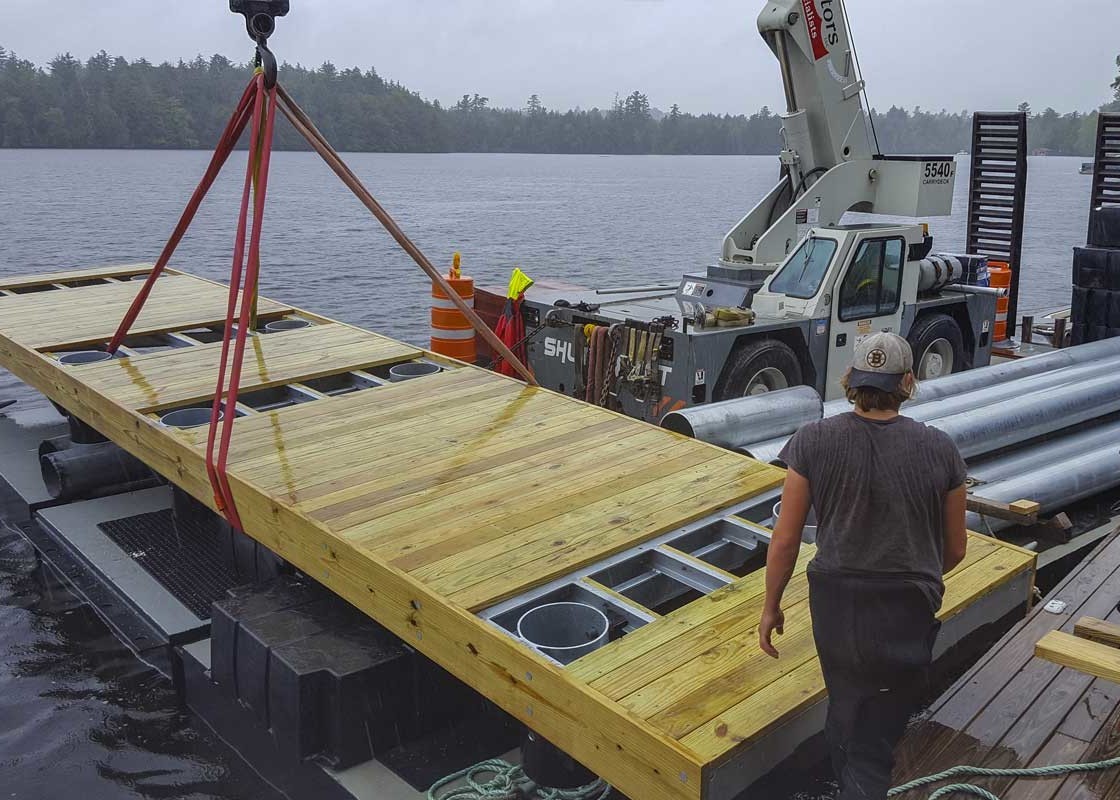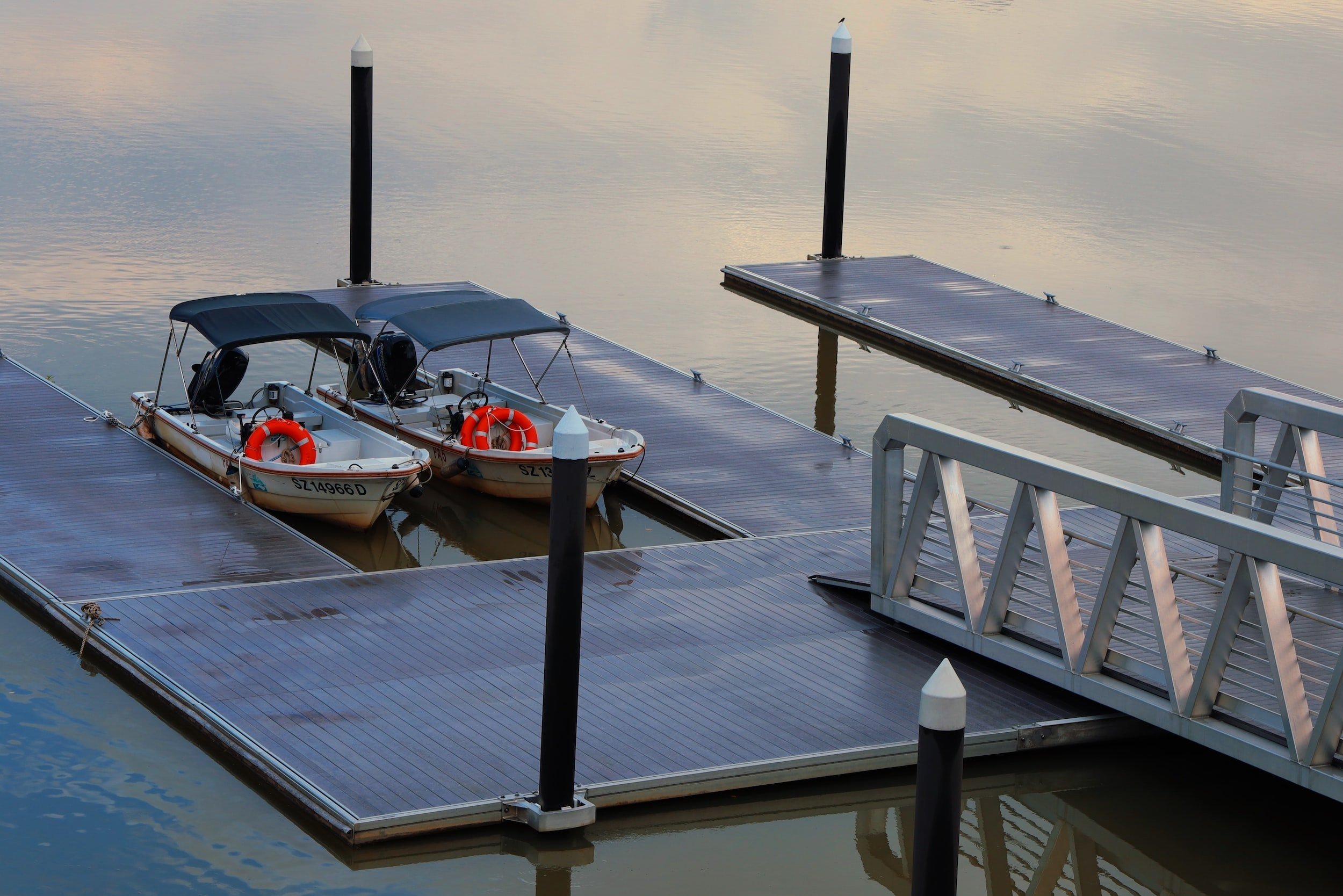Seasonal Preparations: When to Schedule Your Dock Repairs
Seasonal Preparations: When to Schedule Your Dock Repairs
Blog Article
Reliable Dock Fixing Techniques: Guaranteeing Architectural Stability
Guaranteeing the architectural integrity of docks via efficient repair methods is extremely important for the long life and safety of aquatic centers. This involves a multi-faceted method starting with detailed inspections making use of sophisticated technologies like sonar tools and from another location ran lorries (ROVs) to identify both visible and concealed problems. Consequently, choosing the best repair work materials, such as corrosion-resistant alloys and composite materials, is critical for sturdiness. Structural reinforcement methods, including the implementation of cross-bracing systems and load-distribution plates, play a crucial duty in mitigating stress factors. However, the relevance of these techniques becomes apparent when discovering sophisticated repair service methods and preventative upkeep approaches.
Examining Dock Damage
Examining dock damage is a crucial very first step in ensuring the structural integrity and security of any kind of docking center. This initial evaluation involves a thorough assessment to recognize both concealed and visible problems. Trick elements to examine consist of the dock's foundation, pilings, outdoor decking, and equipment. Each part needs to be scrutinized for signs of wear, rot, corrosion, or other forms of degradation that could endanger the architectural honesty.
Structural designers or certified examiners typically execute these assessments using specialized methods and devices. Underwater evaluations may use sonar tools or from another location ran automobiles (ROVs) to find immersed damage. Above water, aesthetic inspections are complemented by utilizing dampness meters and other diagnostic devices to discover underlying concerns not right away visible to the naked eye.

Finding Fixing Products
Picking the appropriate repair materials is a crucial step in the dock repair process, one that straight influences the longevity and efficiency of the fixed structure. Product option must be driven by variables such as ecological conditions, load-bearing demands, and compatibility with existing dock components. For instance, timber is a standard choice for anchors as a result of its natural strength and visual appeal. However, picking the ideal kind of timber, such as pressure-treated lumber or naturally rot-resistant types like cedar or teak wood, is vital to withstand aquatic atmospheres.
In enhancement to wood, composite materials are progressively prominent as a result of their sturdiness and reduced upkeep requirements. Composites, generally made from a blend of plastic and timber fibers, offer outstanding resistance to rot, bugs, and UV damage. For metal docks, choosing corrosion-resistant alloys such as galvanized steel or marine-grade aluminum is essential to avoid rust and guarantee structural stability in saline water conditions.
Epoxy resins and marine-grade sealers are essential for fixing cracks and securing joints, giving a waterproof obstacle and boosting the dock's total stamina. By diligently picking top notch materials, dock fixings can achieve resilient outcomes, consequently safeguarding versus future destruction and ensuring safe, dependable use.
Architectural Support Methods
Reliable structural reinforcement techniques are crucial in ensuring the security and durability of dock repair work. This approach is especially reliable for docks exposed to heavy tons or rough ecological conditions.
An additional important technique is the application of fiber-reinforced polymers (FRP) These products offer high strength-to-weight ratios and outstanding resistance to corrosion, making them excellent for strengthening wood or concrete anchors. FRP can be used in sheets or strips and adhered with epoxy materials to improve architectural integrity.
Bracing and securing systems likewise you can check here play a critical function in structural reinforcement. Cross-bracing, utilizing steel or wood beams, can counteract side forces, decreasing guiding and activity. Securing systems, such as helical piers or driven piles, supply a stable foundation by transferring tons to deeper, a lot more stable dirt layers.
Finally, the combination of load-distribution plates can help disperse weight a lot more evenly throughout the dock's surface area, reducing local tension points. These methods collectively guarantee that anchors remain robust and safe, efficient in withstanding the roughness of their functional environment.
Advanced Repair Approaches

Another innovative technique involves undersea welding, which enables repairs to be carried out without the requirement to dewater the area. This technique is especially useful for attending to structural issues in submerged dock components, making sure marginal disruption to operations. Enhanced welding techniques, paired with robot systems, provide accuracy and integrity, thus expanding the lifespan of the dock.
Additionally, cathodic protection systems are executed to prevent deterioration in metal dock structures. By utilizing sacrificial anodes or pleased existing systems, these methods properly mitigate the electrochemical processes that result in product damage.
Lastly, progressed surveillance technologies, such as structural wellness tracking (SHM) systems, supply real-time information on the problem of dock structures. These systems make it possible for aggressive maintenance and prompt treatments, ultimately making sure the long-term structural honesty of the dock.
Upkeep and Avoidance
Maintenance and prevention are basic ideas that underpin the long life and safety and security of dock structures. Routine evaluations are paramount, allowing for early detection of deterioration, prospective weaknesses, and environmental impacts. A proactive technique, involving routine checks for corrosion, rot, and architectural shifts, alleviates costly repair work and lengthens the dock's operational life.
Safety nets need to include applying safety coatings to steel elements to defend against rust and making use of cured wood to resist decay. Additionally, making sure correct water drainage and ventilation can stop water build-up, which is an usual reason for architectural deterioration. Integrating top quality materials and adhering to maker guidelines throughout building and construction and repair work stages also play crucial functions in improving durability.

Educating workers in dock upkeep best methods ensures consistent application of safety nets. Leveraging technological advances, such as drones for examinations and sensing units for real-time surveillance, can additionally anchor improve maintenance initiatives. By prioritizing maintenance and avoidance, dock owners can guarantee architectural integrity, operational security, and economical administration over the dock's life-span.
Conclusion
In verdict, maintaining the architectural honesty of marine facilities demands comprehensive dock repair work strategies. Advanced repair service strategies, combined with routine upkeep practices, make sure the dock remains risk-free and functional under diverse environmental conditions.
Making certain the structural stability of anchors through efficient repair techniques is vital for the long life and safety and security of marine facilities.Choosing the appropriate repair materials is an essential step in the dock repair process, one that straight affects the longevity and performance of the repaired structure.Efficient architectural reinforcement methods are crucial in making certain the stability and longevity of dock repair services. By focusing on maintenance and prevention, dock proprietors can ensure architectural honesty, functional safety, and affordable monitoring over the dock's lifespan.
In verdict, keeping the structural stability of aquatic facilities requires detailed dock fixing methods.
Report this page